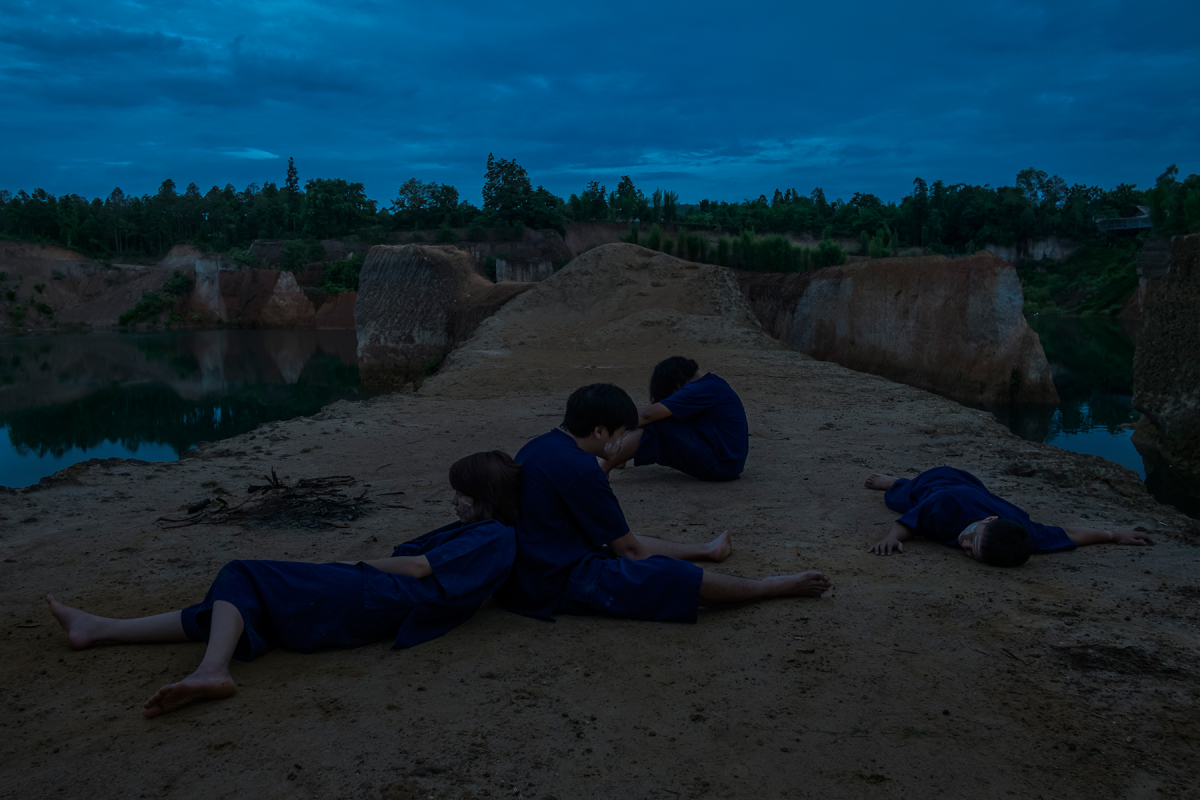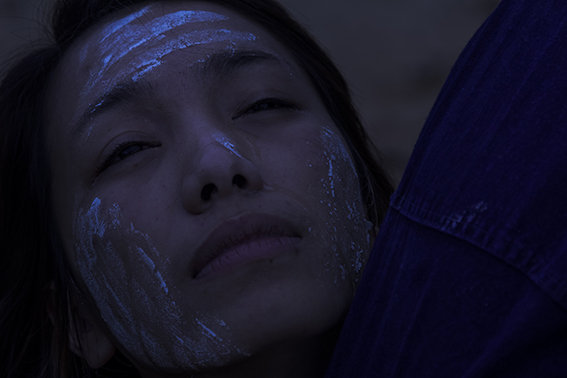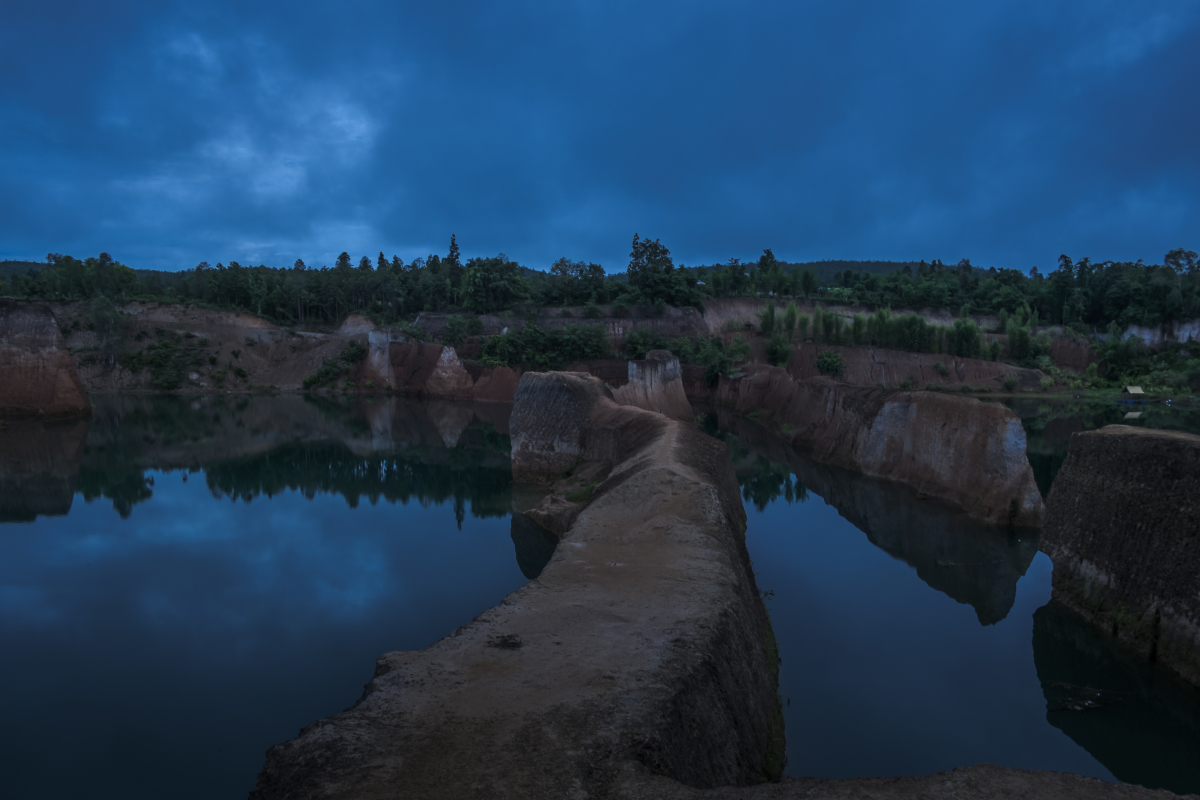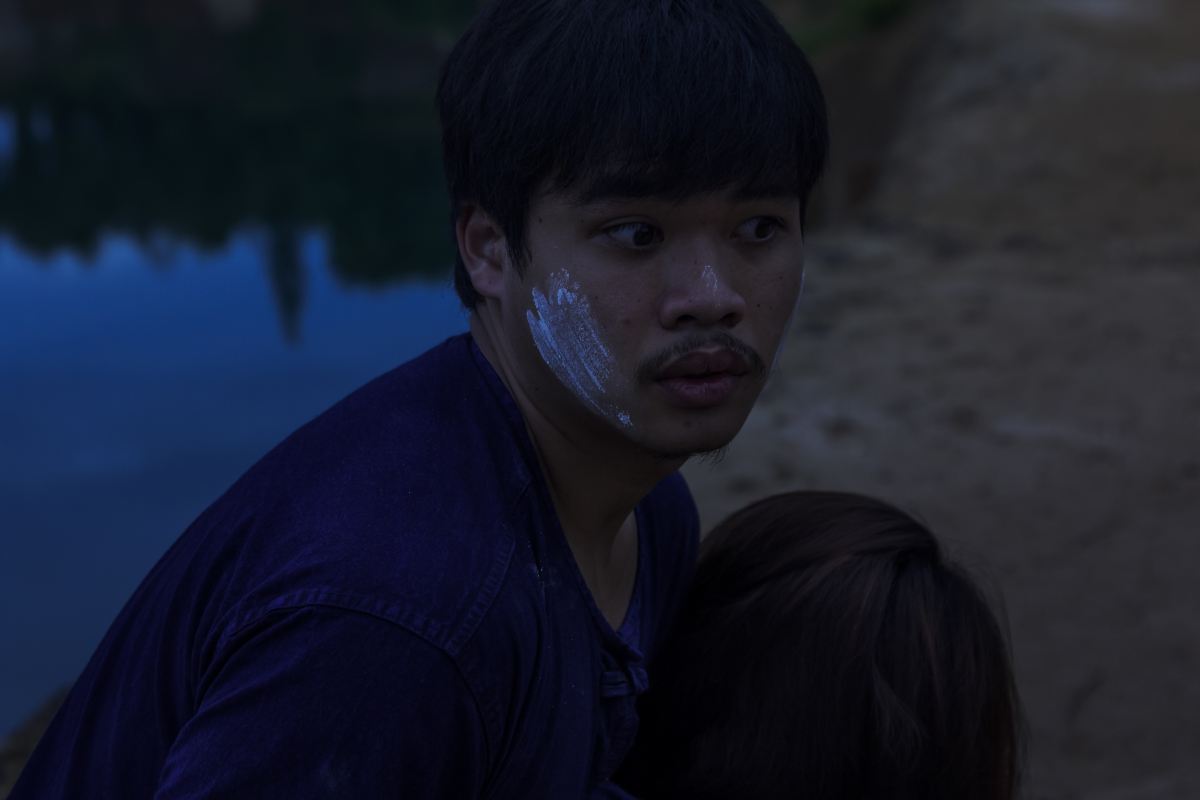
Sydney born and bred, visual artist Sam Doctor has an ongoing passion for showcasing the loss of landscape from the destruction caused by humankind.
He excels in portraying the constant battle between environment and humanity. The focal point of his portrayal is exposing the devil that controls human nature and the fragility of humankind in the face of a natural force.
Doctor’s passion for the arts had led him to pursue and complete his Bachelor of Visual Arts (Honors) and Masters of Research in Visual Arts from Sydney College of the Arts at University of Sydney.
Give unto them beauty for ashes, the oil of joy for mourning, the garment of praise for the spirit of heaviness. Arthur C Danto The Abuse of Beauty
The entrepreneurs of the corporate world see any landscape as a commodity, skinning and exhausting it to its core, giving little or no care to the destruction they havoc upon it. Once the greed of a man is satisfied with the land, it’s disregarded like scraps. Doctor’s recent surreal exhibition The Return is a perfect representation of this and the constant battle between the corporate world and landscape.
A mournful tribute to a wilderness destroyed and a people misplaced – Sydney Morning Herald
Doctor spent over a year in Thailand before undertaking The Return as a project. He has witnessed corruption at all levels of the society. The Return consists of two photographs and a dual-screen installation, in which Doctor evokes the beauty from the loss of the landscape using four local actors with a spellbinding narrative. The project took Doctor six months to complete from the research to the final edit.

The poignant narrative behind The Return video installation and photographs is about four friends who grew up in Hang Dong Quarry, near Chiang Mai, had gone for a significant amount of time and return to their homeland to find that it has been mined. The four friends walk through the lands reminiscing the place where they grew up and used to play together. As they walk through the land, it dawns on them the mining industry has destroyed all the connection they shared with the land. The project was shot in the early morning as Doctor finds to shooting at dusk enhanced the apocalyptic and sublime aesthetics to the work.
The photographs And Then There Was Nothing and Sorrow Will Come In The End capture the destruction and the mourning of the land. A land that is finally resting in peace, which is enhanced through the stillness of the aqua dark blue waters that has slowly accumulated over time. The colours captured in the photograph is a treat for the eyes with the various shades of orange, dark blue and dark green.
It is subtle but heroic finding the beauty in the loss of the land- James Kerr (Chalk Horse Gallery Manager)
The dark green trees juxtaposed with the worn down soil mine symbolise that there is the possibility of regrowth of the land even though it may take a very long time. While the photography evokes pain from the land, the trees give hope with their life. The protagonists are local actors dressed in traditional farmers clothing and faces painted with traditional village paint – a representation of farmers from rural areas. The use of actors proves that the locals have no say and are the ones suffering from the corruption and destruction of the land. The positioning of the actors also conveys certain messages: the actor facing down to the ground is not only mourning the loss of the earth but can also be seen as hugging and saying sorry.
The dual-screen video installation is shot in slow motion to emphasise the state of shock, terror and loneliness. One screen displays the protagonist going through the emotional trauma which enhanced through the close-ups and the camera at eye level. The second video is the aerial view of the soil mine shot with a drone. It juxtaposes with the first screen to heighten the severity of the mining destruction upon the land. The only form of life here is the two little birds flying among the mine, giving that little bit of hope.

At first, the scourged land appears unpopulated, its beauty almost too much in the slow vision of the floating camera. But the perfection of the drone’s distanced gaze is soon disrupted by Doctor’s change of perspective, as we begin to see this place through the reactions of the ‘returned’, four figures who represent those dispossessed by the mining enterprise. – Dr Jacqueline Millner
As a viewer the more one looks into the photographs, the more emotional the viewer will become as the pain of the land started to creep upon them slowly. Both the photographs and the video installation transport the viewer to the mine and give the feeling they are here, standing among the rocks with the protagonists, grieving the loss.
Dr Millner also states that-
While Doctor’s work is site-specific and made in response to his long-term residency, we know that forced expropriation and displacement of small communities, and contempt for the need to restore and rebuild after the ‘wealth’ has been extracted, are constants in the history of modernity and colonialism. The beauty art creates this space for imagination in counterpoint to the misleading beauty of the mine’s remnants that cover over human and environmental damage.
The Return offers us a moment for reflection, to think on the connections between land and self, between North and South, and to mourn what can never be regained
FIB’s exclusive interview with Sam for his recent exhibition The Return.
Who and what influences your work?
I am not normally influenced by other contemporary artists. However, I am inspired by the German Romantic Painting period especially Casper David Friedrich and a lot of cinema from all time periods especially some of the masters like Bergman, Herzog, and Godard.
Have you always been passionate about photographing landscapes that have faced destruction?
Yes, I have, especially the extent to which the landscapes can reflect a state of emotion. The landscape is a central feature and preoccupation in practice; it is a presence, trope, and genre that is used to signify various emotional states and psychological attitudes. Indeed, the landscape becomes in my work a resonating conscience, as an encompassing surrogate for the mind. What is of greatest interest is the way in which landscape, when it’s represented in video, art, photography, film, or painting, can almost have a personality of its own, with its ethics and will.

Could you tell me a little bit about how the concept came to the works and the reason behind for choosing the soil mine?
At the time, I was living in Thailand on a year residency, and I was reading a lot about the Land Grabs that were taken away from small local villages in northern Thailand, Laos and Myanmar. Then I heard about this specific location from different locals and backpackers who had used it as a swimming hole. Then I started to research the history of space and thought it could be a good conception of a loose narrative to revealing the corruption of the Thai governments stealing the land of poor communities.
Is this idea of the confrontation between humankind and the environment something you will seek to challenge further through your photography, video installations or sculpture?
Yes, I always turn to the sublime in what I might call ‘aftermath art’ – the documentation of catastrophe and its detritus, sites of danger and devastation in which the possibility of redemption has given way to decay.
Your work addresses issues of the fragility of mankind in the face of natural forces and the devil that is evoked in humans. How have you sought to explore these concepts through your project in its different platforms?
Video and photography are not just seen as a medium – and this is also crucial for the understanding of my various projects – but as a tool, and an agent of exploration and intervention, of discovering and uncovering. My body of works are dramatically scarred landscapes, dumps, industrial worksites and ecological catastrophes. They stand out as examples of the way they allow us to reflect on mass production, mass consumption, and environmental devastation in images whose beauty is neither a trivialisation nor an anodyne beautification. The works also encourage us as viewers to think about the role of the artist in society as aesthetic purveyor or truth-teller. In doing so they raise deep, and perhaps unanswerable, questions about beauty (the awe) and ethics (the awful).

Have you collaborated with Michele Vescio before and how was the collaborating experience?
I haven’t before, but Michele has been a long friend of mine, and I appreciate the qualities and skills he brought to other collaborations I had seen and what I have heard from Michele’s previous works.
In creating the sound for ‘The Return’, Michele wanted to evoke this encounter within the sound by presenting a lingering drone-like noise to underline the work. Throughout the sound, his intention was to study the fluidity in human interactions, to understand the concepts of normative behaviours and overall human emotions in correlation with the themes of environmental and landscape factors prevalent in my video work.
Michele felt that the sound needed to maintain a certain prolonged tension to capture the sense of despair and fear while also ensuring to create a certain beauty within the soundscape. Michele thought it was crucial that the sound became the narrative to the subject matter to enhance internal discussion within, and throughout the visual experience, without hindering the underlying intensity that the video work itself contained.
Michele’s aim was to stimulate and generate discussion related to the presentation of the ideas and concepts within the development of the collaboration – Michele wanted the sound work to be directly connected to my work. From a sound artist perspective, he liked the challenge of interconnecting both our works/worlds and how it would be a representation of the overall essence of the installation.
What do you want people to take away from the project?
A Deeper Meaning of the environment, the corruption of governments have in small communities, and to view a piece of artwork for what I call “the others’ who can’t or don’t speak so loudly.
What are your plans for next year? What projects do you wish to undertake?
I want to construct a landscape work around the three main detention centres based around Australia on various Islands being Christmas Island, Nauru, and Manus Islands. That also explores the viral treatment of refugees that Australia takes on this global issue. I am also interested in producing a body of work based around various salt mines in Australia and across the world.
Sam Doctor’s The Return was showcased at the Chalk Horse.
Sam Doctor would like to pay homage and compassion to the six major hill tribes in Northern Thailand being Akha, Lahu, Karen, Hmong/Miao, Mien/Yao and Lisu.







